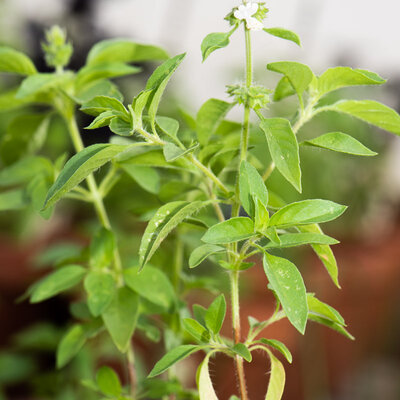
Tulsi Kali - Basil tulsi
This white-flowered Tulsi has pointed, slightly elongated green leaves with a lemony fragrance. This basil is very popular in Thailand, Vietnam, Cambodia, etc.
Ocimum canum is resistant to the fungus Fusarium oxysporum ssp. basilicii as well as to basil blight, Peronospora belbahrii.
To be discovered on the Kokopelli blog: "Tulsis and other Basilico-molecular Truths to free ourselves from the Pharmacratic Terror".
These products may also be of interest to you
in bucket
Sow in trays at temperatures between 18 and 20°C, under a well-lit shelter, 6 weeks before planting. Transplant into individual cups when plants have 4 to 5 leaves, or plant directly into warmed soil, spaced 25 to 30 cm apart. Take care not to over-water to avoid the risk of wilting.
March, April, May, June
June, July, August, September, October
in the ground, in pot, in the greenhouse
full sun
medium
potting soil, sandy, gravel, humus
drained, light, reheated
Ocimum americanum sp. americanum
mid-season
200 seeds
Green
fragrance, edible
From 50 to 60 cm
From 5 to 10 cm
pointed
Asia
"Semences de Kokopelli" by Dominique Guillet
Tulsi is native to Asia. It is very popular in Thailand, Vietnam and Cambodia.
African basil is mainly used to treat diabetes, but also dysentery, colds, parasitic infections, fevers and joint inflammation. Recent studies have highlighted its anti-bacterial, anti-fungal and anti-viral qualities. The essential oil of the leaves is used to treat respiratory problems and as an antipyretic. It is also used in Africa to ward off mosquitoes carrying malaria and dengue fever.






